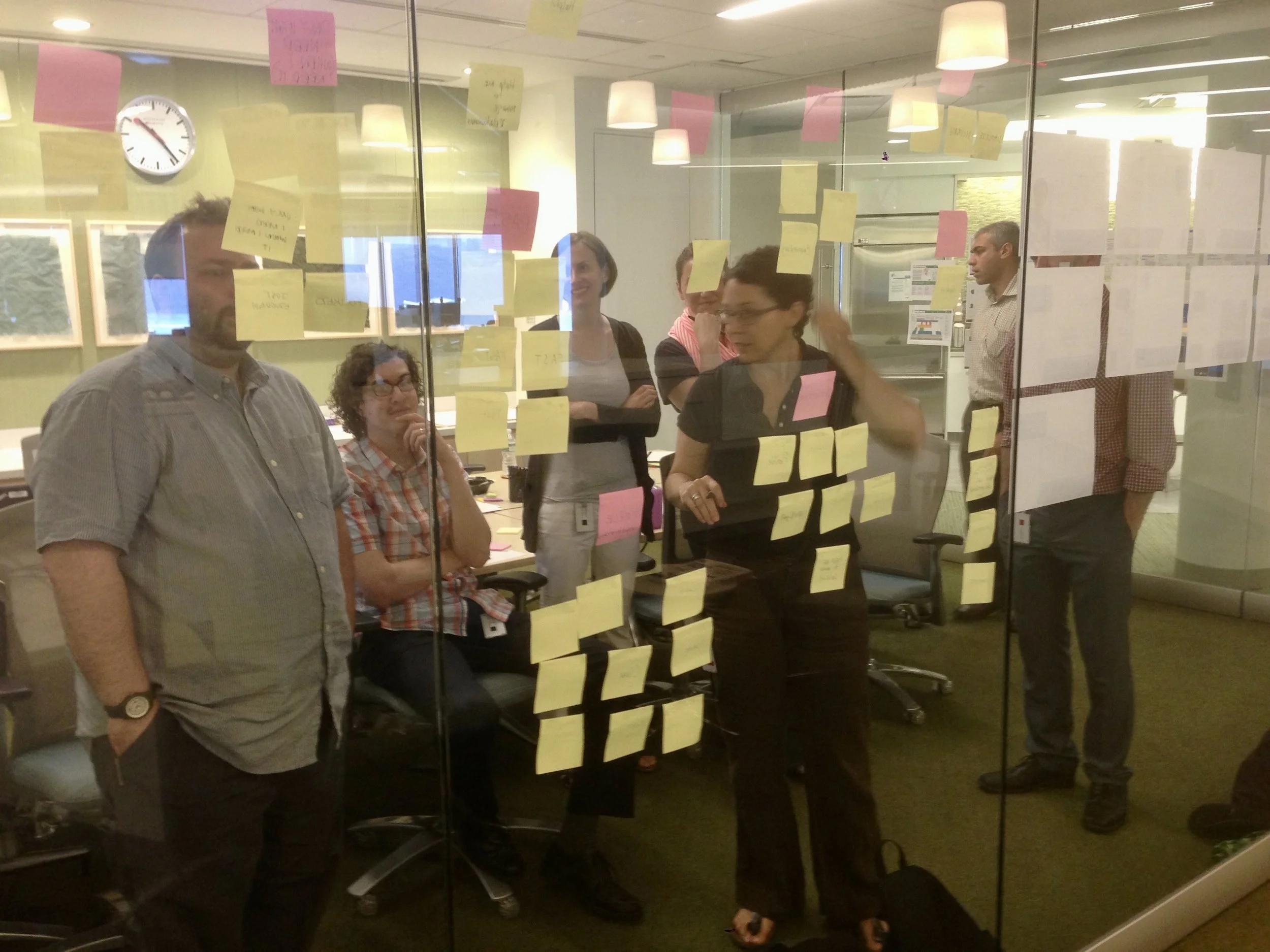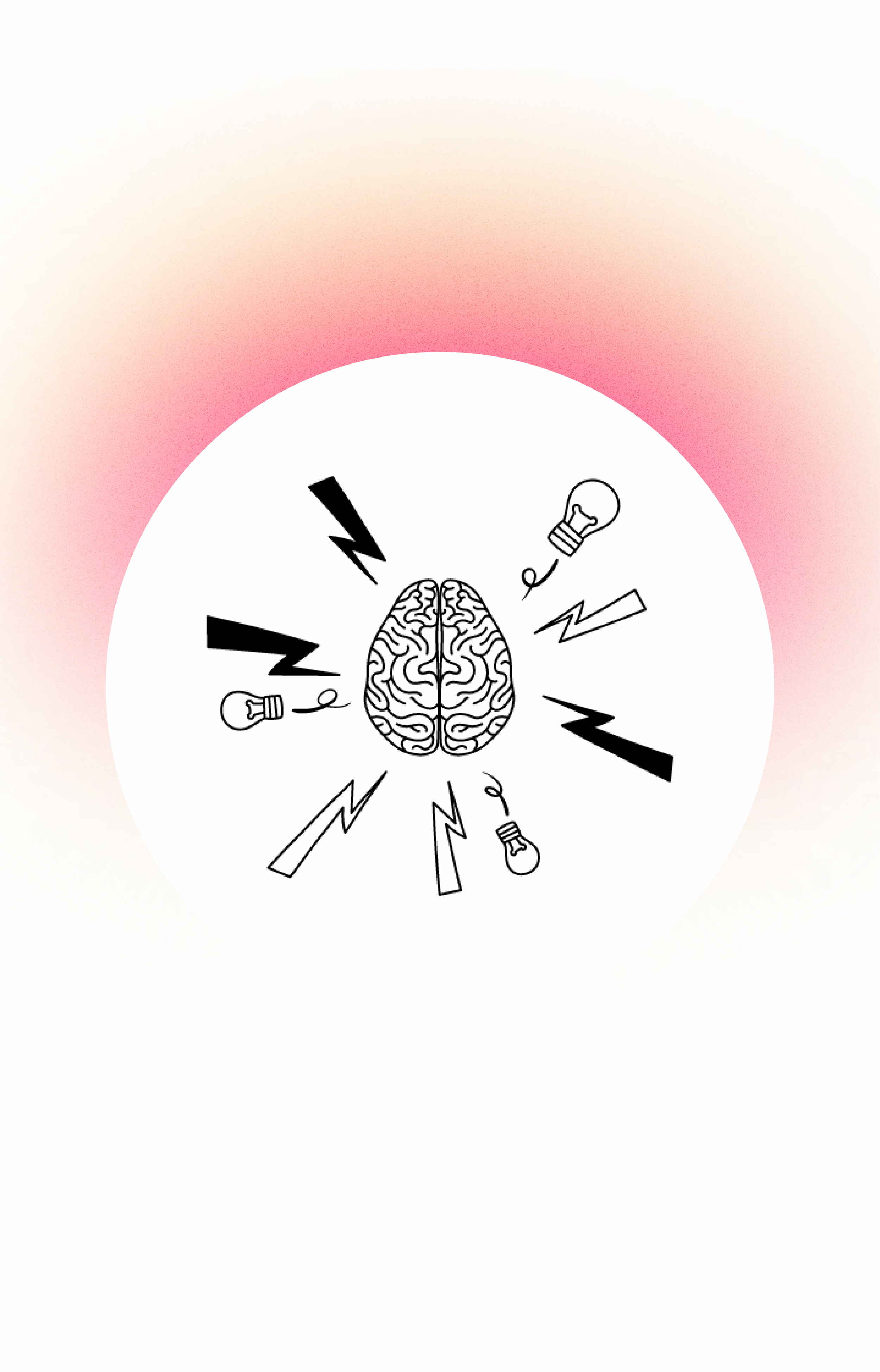
How I lead authentically
Leadership | 6 minute read
OVERVIEWAuthentic leadership, a journey shaped by experience and values, is guided by eight principles that I've honed over 15 years of leading design teams. These principles are the cornerstone of how I lead my team.
1.
Tell it like it is
Be direct in your interactions and feedback
Candid feedback matters. I've always greatly appreciated it when a colleague is candid in sharing their point of view, even if it's something I'm not expecting to hear. Doing so indicates a level of care, respect, and trust that is critical for high-performing teams. When preparing feedback, I choose the right time and place and think carefully about how others may receive it. My feedback is timely, direct, and genuine, and originates from a desire to help others appreciate what they did well or identify areas for improvement.
2.
Lead by example
Show, don’t tell
Leading by example is not just a saying, it's a practice that establishes trust. Any value you uphold is meaningless if you're not living it. To lead effectively, you must embody the behavior you expect from others. This is especially true when things don't go as planned. Leading by example is the most powerful way to teach others how to respond.
The manager assessmentNetDocuments conducted bi-annual eNPS manager assessments, allowing direct reports to provide anonymous ratings and feedback. Although I was happy that my eNPS ranked high amongst other managers, there were clear areas for improvement. I saw this not only as an opportunity to improve, but also as a chance to lead by example. During our monthly all-hands meeting, I shared my synthesis of the feedback, highlighting the areas for improvement. Next, I asked the team for their ideas on how I could improve and ways to keep me accountable. For example, I learned I was too quick to offer specific feedback during critique, which gave others pause before providing their own. I then made it a point to never lead with my own input and instead invited others to comment first. Over the subsequent surveys, my ratings improved as I implemented their suggestions. A mature leader must be able to handle criticism and then lead by example. By openly sharing my assessment and inviting my team to help me address the concerns, I demonstrated firsthand how to handle and act on such feedback.
3.
Ask questions
Listen carefully, then help others find the answers
Asking questions enables others to untangle significant and complex challenges. When speaking with directs, ask questions to allow them to tie the answer back to the big ideas and strategies. Encourage the team to find the answers themselves, which helps them develop the critical thinking skills necessary to make informed decisions. For example, when a designer comes to me with multiple design options, asking which is best, I'll ask them to explain how each solution aligns with design tenets or business strategy. As the designer rationalizes each design against principles, the preferred solution often becomes obvious.
4.
Invest in people
Seek and develop relationships with those around you
Early in my career, I believed that the strength of my output alone would guarantee success. If I worked hard and delivered excellent designs, good things would come. This approach worked well, but as I desired to have more influence in decision-making, great work alone wasn't getting it done. I learned that I needed to spend more time developing and strengthening the relationships around me. Now, I prioritize time to discover, develop, and deepen the relationships of my team members and colleagues. It's the strength of these relationships that opens doors to my ideas and trust in my judgment.
A presentation deck assistSmall gestures matter. Offering even a small amount of help for a colleague is a great way to lessen their burden and deepen relationships. For example, when I saw that a business partner was struggling to present her business case visually, I offered to illustrate the key concepts. As a result, both the impact of the presentation and our relationship strengthened. Paying it forward, the same partner highlighted to senior leaders the contributions I had made. Soon, other leaders would invite me to provide feedback on their thinking, which opened the door to seeing and, ultimately, influencing the strategic discussion.
5.
Develop future stars
Top performers require top leadership
Early in my leadership role, I lost my best designer to a FAANG company. She didn't leave for money but because I'd been limiting her growth, thinking I was being helpful by protecting her from difficult stakeholders. That departure cost the team months of momentum and taught me that top performers need challenges, not shelter. To retain your best people, you need to consistently work to ensure they are recognized, engaged, and challenged, rather than overly protected. High performers deliver more, so ensure the recognition is commensurate with the value they provide. Second, keep them engaged by exposing, not shielding, them to the why behind the strategy and even challenges the organization faces. Being exposed to significant challenges is a powerful way for your stars to feel invested in the outcomes. Finally, challenge them under actual conditions. Let top performers stretch and grow under natural stress. Eventually, it will be your turn to pass the torch, so develop your best people to take it forward.
6.
Own your missteps
How you handle a mistake is more important than making one
Mistakes happen. Being perfect can be a sign that you're not leading, as it requires taking intelligent risks. Your mistakes reveal your character, but your response defines it. When I make a mistake, I take ownership quickly and never try to deflect or distribute blame to others. Next, reflect and learn from what happened so you can consider that knowledge the next time you're in a similar situation. Then, make it a teachable moment for others by sharing what happened and what you learned from it. This type of honesty is beneficial for others who have also misstepped, as it acknowledges that their situation is not unique and provides a model for recovery. Finally, move on and resist dwelling on past mess-ups. Let the learning propel you forward, better prepared for what lies ahead.
Boosting our design workshop playbookAfter spending six weeks on a North Star design loved by stakeholders, I walked into a product owner's meeting expecting similar praise. Instead, I found eight frustrated faces. In my rush to move fast, I'd alienated the very people who needed to implement the work. In response, I met with each product owner to hear their concerns firsthand and apologize for feeling out of the loop. As a result, we revised our design-intensive playbook to include questionnaires beyond stakeholders to downstream leaders. Next, we reserved 30 minutes at the end of each day to broadcast the latest activities to any interested party. Lastly, we surveyed all interested parties after the project to get their feedback to shape our reporting. These steps significantly improved the reception of future exercises and deliverables. As a bonus, the pre- and post-questionnaires revealed blind spots unknown to stakeholders, which, when shared with them, helped them better align their expectations.
7.
Anticipate what’s next
Shape the future by recognizing potential impacts early on
Facing uncertainty while leading is a given. Good leaders intuit when tension is present and how it may affect their team, then proactively prepare to influence the outcome. When done well, leaders can replace fear and anxiety with confidence. For example, when sensational world events occur, anticipate that your team will naturally react to what happened. Respond proactively by acknowledging the event, hearing concerns, and communicating how the organization will respond.
8.
Customer behavior shows the way
Focus on what people do, not what they say
What customers say and what they do often tell different stories. Early in my career, I primarily relied on qualitative feedback and opinion to validate design direction. Customers would repeatedly request a feature, but upon delivery, it would go largely unused. I evolved my approach to weigh behavioral data alongside verbal feedback and saw much better results. When leading teams, I coach designers to trust patterns over preferences and foster cultures of evidence-based decision-making through research, observation, and experimentation. Customers vote with their actions, so leading effective design teams means bringing both qualitative and quantitative evidence to the decision-making table.
The power of user dataWe heavily relied on customer testing to shape Fidelity Go, a savings and investment offering designed for digital natives. We frequently conducted remote, moderated tests with customers using mock data to help pinpoint promising design options. Of course, test details such as the number of accounts, account type, balances, returns, investments, and transactions were representative but bogus. Once the feature was live, we often invited the participant to revisit the design using a live site containing their actual data. Where the participant may swoon over and be forgiving of a design using mock data, the same person would be much more critical and forthright with their impression when viewing a similar arrangement with their actual data. Once we observed this phenomenon, we shifted our research to lean more heavily on in-market methods, such as A/B tests, which leverage real customer data, yielding better and more actionable feedback.
TakeawayLeadership gets messy. You'll face situations you've never encountered, with no playbook to follow, and that's when principles matter most. They give you a foundation when everything else feels uncertain to help you make consistent decisions that build trust over time. These eight values have shaped how I lead and build teams that deliver exceptional outcomes while genuinely enjoying working together.




